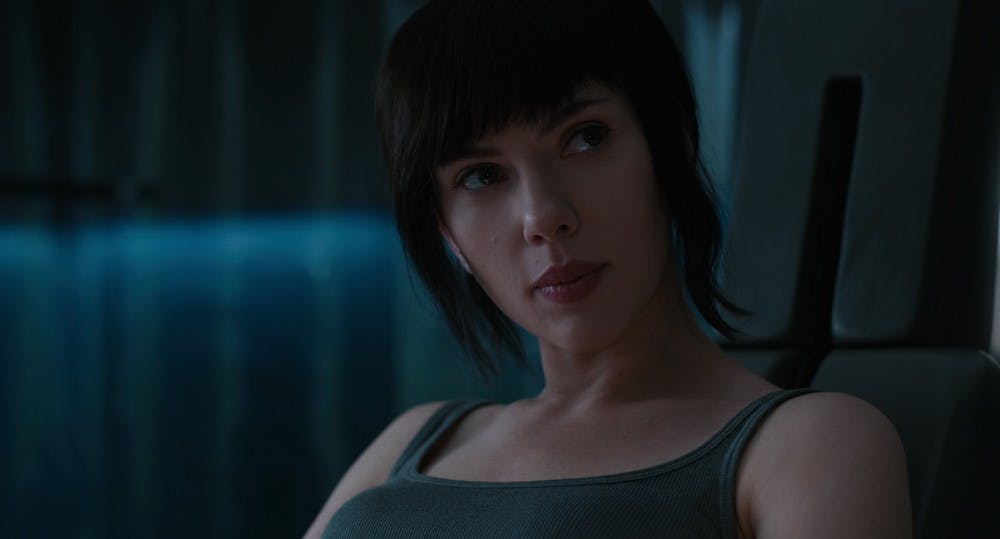With the Academy Awards quickly approaching, Hollywood’s diversity problem is once again on most people’s minds. This year’s slate of nominees is, thankfully, the most diverse lineup in a long time, with seven acting nominees of color and various stories about people of color in the best picture race.
With that said, most of this year’s nominees of color are black. While black actors and filmmakers have historically struggled in Hollywood, they are not alone. Dev Patel is only the 13th actor of Asian descent to be nominated for an Oscar, and he’s the second Indian actor ever nominated.
Asian representation in the entertainment industry often falls to the wayside when discussions of diversity take place, but it presents more of a problem every year. Not only do Asian actors struggle for recognition, but the whitewashing and erasure of Asian roles in film and television is a constant and overlooked issue.
There are a few famous examples of whitewashing Asian roles, like when Emma Stone was chosen to play a multi-racial character of Asian descent in 2015’s “Aloha” or when Jake Gyllenhaal donned eyeliner and a dark spray tan to play the eponymous “Prince of Persia” in 2010.
Actor and comedian Aziz Ansari is outspoken about the struggle of Indian actors in Hollywood.
“These days, Indian people, real Indian people, pop up way more in film and television, but fake Indians are still around more than you think,” he said in an interview with the New York Times. “I loved ‘The Social Network,’ but I have a hard time understanding why the Indian-American Harvard student Divya Narendra was played by Max Minghella, a half-Chinese, half-Italian British actor.”
Just in the last few years, instances of blatant whitewashing and erasure of Asian roles is staggering.
Films like “Exodus: Gods and Kings” and “Gods of Egypt” purposely set their stories in Middle-Eastern countries yet cast white actors in the leading roles.
While their reasoning is clear from a monetary standpoint, the fact that studios think Asian actors can’t bring in enough money to anchor blockbusters is a far-reaching cultural issue.
In 2014, “Edge of Tomorrow” was adapted from a popular novel into an action blockbuster. While the main character of the book was a Japanese hero named Keiji Kiriya, the role was adapted to fit Tom Cruise, and the film ended up starring almost entirely white actors.
The examples go on and on. In 2015, white actress Mackenzie Davis was cast in the role of Kim Park in “The Martian.” Her casting prompted questions of why it was necessary to change the race of such a minor character in the book and film adaptation from Korean to Caucasian.
In Tina Fey’s Afghanistan-set “Whiskey Tango Foxtrot” last year, the two major Afghan characters are played by Christopher Abbott and Alfred Molina, neither of whom are of Asian descent.
“I had a lot of say. If your next question is, why is Chris Abbott not Afghan? — I did beg [the casting directors], ‘Guys, my preference would be a native speaker,’” Fey told the New York Times. “They pleaded their case that Chris [was] their choice. Tricky thing is, Afghans [can be] Caucasians.”
Fey isn’t the only filmmaker to make excuses for their casting choices. Last year’s “Doctor Strange” infamously cast Tilda Swinton as the Ancient One, who is an older Himalayan man in the Marvel comics.
When controversy arose upon her casting, Marvel was quick to defend their film by arguing that they changed the role to a white woman in order to avoid perpetuating Asian stereotypes.
Marvel’s Netflix series “Iron Fist” has also been in headlines lately due to displeasure over the casting of Finn Jones in the lead role.
While Iron Fist is a white man in the Marvel comics, the series draws on many Asian cultural aspects and traditions of martial arts.
Many fans and critics hoped Marvel would take the opportunity of “Iron Fist” to diversify their lineup by casting an Asian actor. Alas, it was not to be.
The comic-to-film adjustment seems to be a hard one for Asian roles to survive as demonstrated by the upcoming manga adaptation “Ghost in the Shell.”
While the heroine is Japanese in the original text, Paramount planned to cast a white actress in the role from the very beginning. Margot Robbie was in early talks for the role before Scarlett Johansson signed on, and it appears that an Asian actress was never seriously considered.
This weekend’s release of “The Great Wall” brings whitewashing back into the conversation. In the film, Matt Damon plays a soldier who saves all of China from mysterious monsters.
Although Damon was likely cast because the Chinese producers of the film thought that American audiences wouldn’t turn out for an Asian leading man, that’s a perception that has to change.
Odds are good “The Great Wall” won’t break any American box office records anyway.
It’s clear Hollywood has plenty of work to do regarding Asian actors and roles, but it’s hard to recognize just how far-reaching the problem is.
For example, the recent stop-motion film “Kubo and the Two Strings” was set in Japan and featured a number of Japanese characters, but most of the voice actors were white. Progress toward on-screen Asian roles may take precedence right now, but diversifying the entertainment industry needs to happen both in front of the camera and behind the scenes.
What it comes down to is that Asian actors, from Middle-Eastern to Indian to Chinese, have been mistreated by the entertainment industry throughout history.
Hollywood diversity is on everyone’s minds, but true progress won’t be made until we realize that it’s not just a black and white issue.




